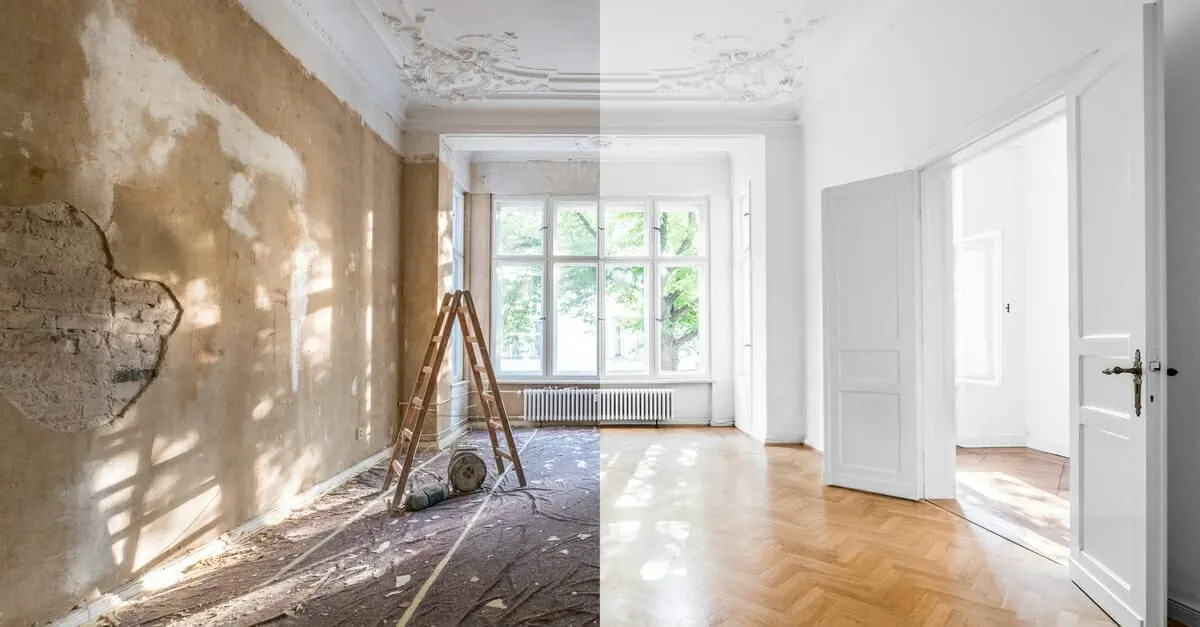ARV is a term you’ve likely heard when talking about investing in distressed real estate. But what does it mean?
Read on to learn everything you need to know about ARV real estate here.
What is ARV?
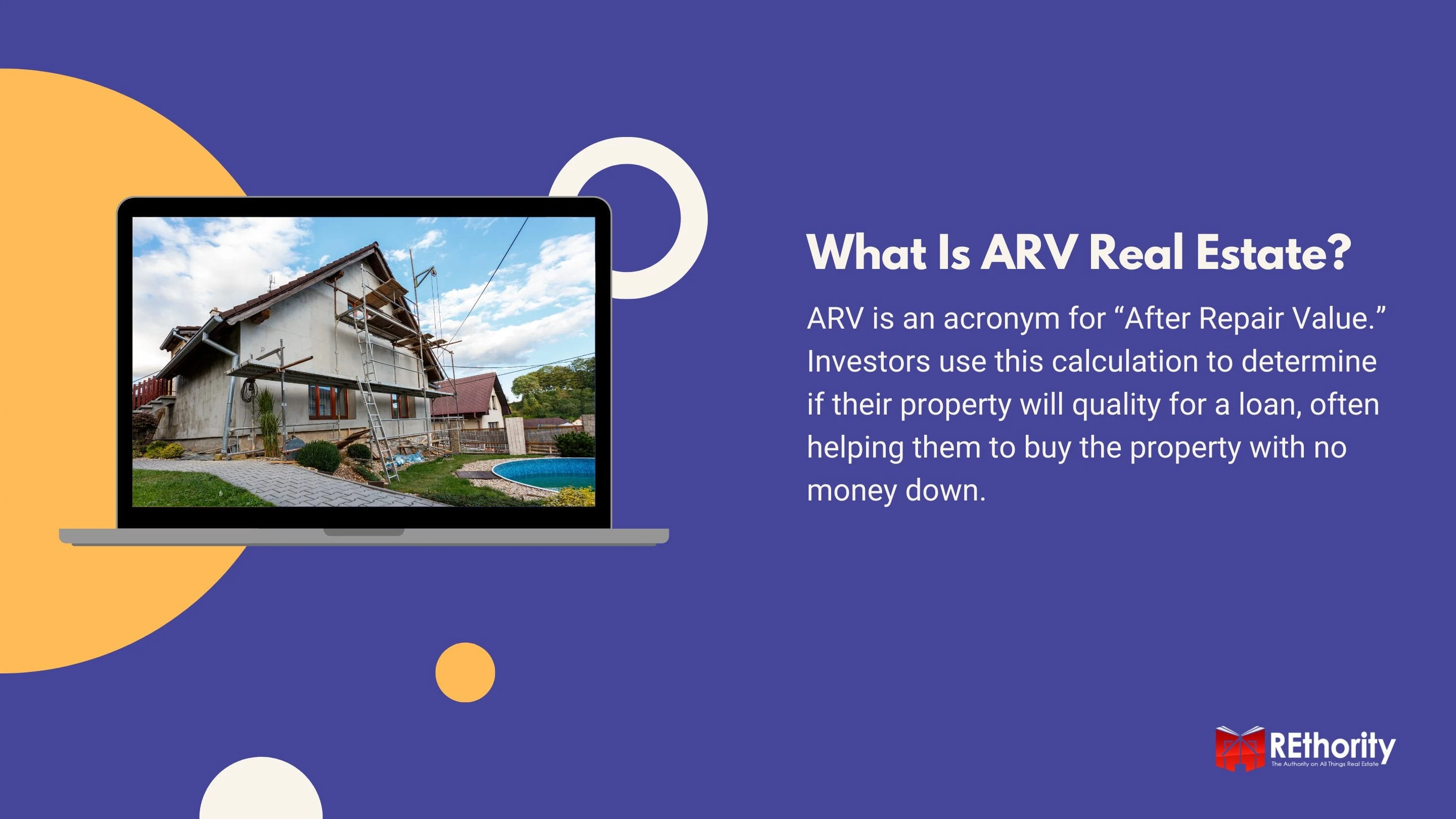
ARV is an important tool for investors in distressed real estate. It’s an acronym for “After Repair Value.”
Investors use this calculation to determine if their property will qualify for a loan, often helping them to buy the property with no money down.
Understanding ARV is helpful for deciding:
- Which properties to buy
- How much to pay
- What to budget for repairs
- Likely selling price of the property after repairs
- What the final profits might be
ARV is frequently used by fix-and-flip real estate investors. It is also used by investors who buy and hold rental properties.
Lenders may also use ARV to decide whether or not to loan money for a rehab project. ARV is just one factor in making a real estate investment decision. But it is an important one.
ARV Real Estate Formula
The formula for determining ARV is:
ARV = Purchase Price + Value of Repairs
For example, a house is purchased for $200,000. The value of repairs is $50,000. So the ARV is $200,000 plus $50,000, or $250,000.
This formula is simple to calculate. But it requires a significant amount of research to fill in the blanks before making the calculation.
Before calculating ARV, a real estate investor needs to know the value of the property as-is. The cost to repair or renovate it is another key item of information.
Before actually making an offer, the investor must consider a range of other costs. Profit and the possibility of unforeseen developments also need to be taken into account when determining the value of a property.
How to Calculate ARV
The first step in figuring out ARV is determining the property value as-is. This is its value before any repairs or renovations take place.
1. Use an Appraiser
One way to get a good as-is value is to hire a professional appraiser. Appraisers are specially trained to produce reliable property values. Appraisers have to be paid, however.
And it may take time to get an appraisal scheduled. Costs and delays may be too much to get a professional appraisal on every property an investor is considering.
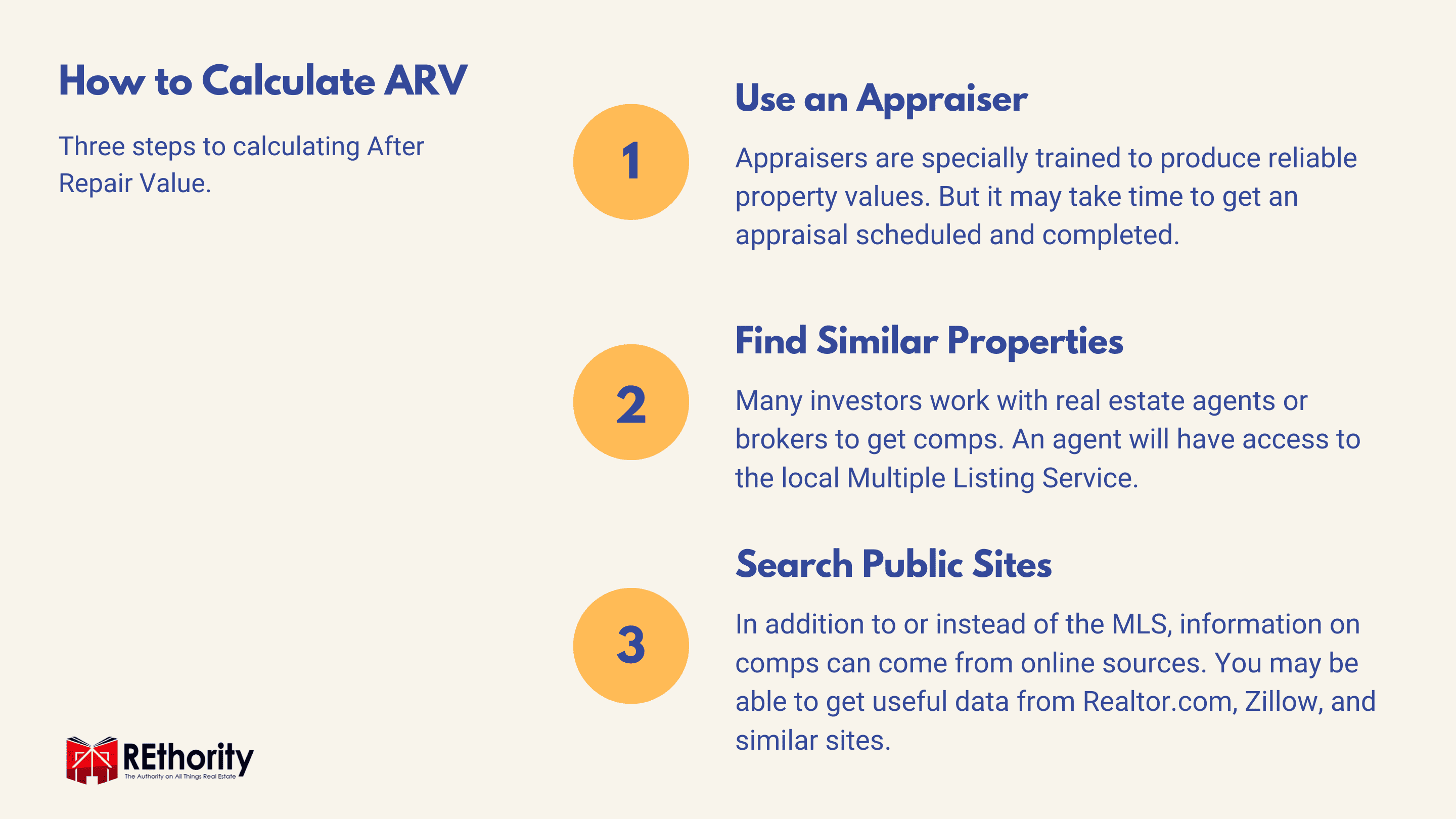
2. Find Similar Properties
A second way is to use comparable property values, or comps. This method assumes that similar properties that have recently sold or are for sale will be worth similar amounts.
Appraisers also use comps, along with some other tools and formulas, to come up with values. Investors can use comps to come up with estimates close to those of a professional appraiser.
Many investors work with real estate agents or brokers to get comps. An agent will have access to the local Multiple Listing Service. The MLS is a good source of information on sales and listing prices.
It’s important to use comps that are similar to the property being considered for purchase. Keep these factors in mind:
- Properties should be located within a mile
- Sales should be within in the last three or four months
- Structures should be about the same age
- Properties should have similar square footage, lot size, number of beds and baths, etc
- Neighborhoods should have similar transportation, amenities, etc
3. Search Public Sites
In addition to or instead of the MLS, information on comps can come from online sources. You may be able to get useful data from Realtor.com, Zillow, and similar sites.
4. Gather Contractor Estimates

Rido/Shutterstock
The next step in figuring out ARV is to find out what it will cost to do the necessary repairs. Highly experienced investors may estimate repair costs by just walking through a home for sale.
However, it’s better to get repair estimates from a few contractors. Get estimates from three or more.
Just know that you’ll eventually have to give them some work, as they’ll be unwilling to give free estimates without seeing any business from it
Make sure estimates are itemized and include material costs. Cost is not the only concern. Quality, reliability, and timeliness are also important.
Pick a Good Contractor
A contractor who doesn’t show up can delay the time when the project will be ready to sell. That increases the carrying costs and can cut into profits.
After an investor makes a few deals, he or she may develop a relationship with a contractor. Having one contractor who can be relied upon for accurate estimates can make calculating ARV quicker and easier.
Buying materials and paying workers aren’t the only costs. While the work is being done, the property may incur holding costs for:
- Financing
- Taxes
- Insurance
- Utilities
- Homeowner’s association fees
After repairs are done, the deal may have other costs before it can be completed. Investors should take into account costs for:
- Marketing
- Selling
- Agent commissions
- Closing
These costs are part of the typical profit equation for real estate deals. However, deals vary. A particular investment may have all, some, or others as well.
The 70 Percent Rule
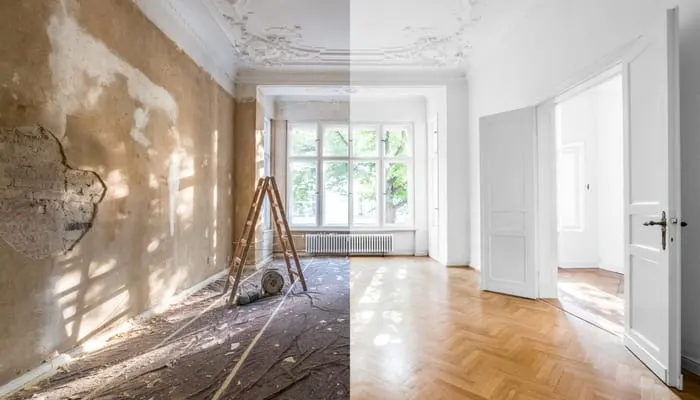
Hanohiki/Shutterstock
Armed with comps and repair estimates, investors generally apply the 70 percent rule.
This rule says an offer should be no more than 70 percent of the expected sale price for the rehabbed property, minus repair costs.
It is intended to:
- Provide for a 30 percent profit margin if all goes as planned
- Provide a cushion in case of unforeseen developments
Over many years, many investors developed the 70 percent rule as a general rule of thumb. It’s not intended to set the exact offer amount. Instead, it should be seen as the maximum bid price.
70 Percent Rule Formula
The 70 percent rule formula uses the ARV and repair cost estimates prepared earlier. The formula looks like this:
Maximum offer = (ARV * 70 percent) – cost of repairs
For example, a house’s ARV is $250,000. The cost of repairs is $25,000. The 70 percent rule formula would look like this:
Example
- Maximum offer = ($250,000 * 70 percent) – $50,000
- Multiply $250,000 by 70 percent to get $175,000. Then subtract the $25,000 repair cost.
The maximum offer on this property should be $150,000
ARV Limits
ARV is an important part of real estate investing or flipping. It can suggest offer amounts, set repair budgets, and determine likely selling prices and profit margins on distressed properties.
However, gathering the ARV information for an investment property takes time and may cost money.
Also, it’s only an estimate. But ARV is a standard tool for real estate investors and can help avoid paying too much for a property.
Should You Use ARV in Real Estate Investing?
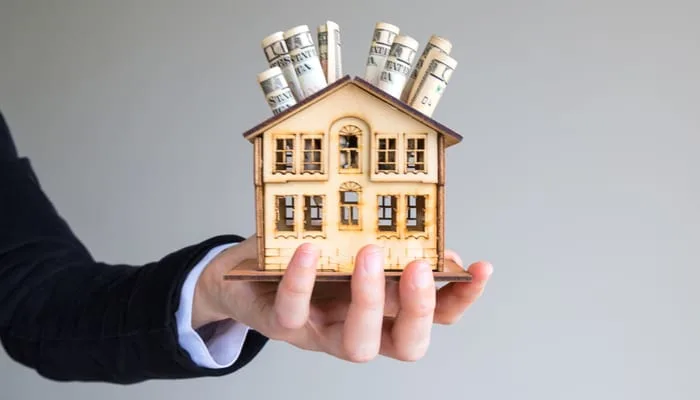
Fertas/Shutterstock
ARV gives real estate investors a great baseline for determining whether a project is worth taking on or whether to skip it. While it’s not perfect, it goes a step beyond the basic rules of thumb.
If you are an investor eyeing deals on a regular basis, ARV is a great formula to memorize. After all, you should know the estimated after-repair value of your project before buying it.
Have you ever used these formulas? If so, what did you think? Be sure to tell us in the comments section below.

